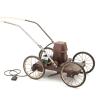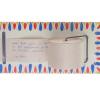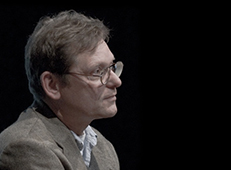What's in a mug?
This beer mug connects two different two different stories of people´s habits in the GDR: adoring Western consumer goods and making things of spare parts.
The core of this mug is made of a beer can from a West German brewery which probably found its way into the GDR as a present. The objects points towards the importance of Western consumer goods which were highly valued in the GDR. They were thought to be of superior quality but also carried the cultural image of being scarce and therefore somewhat special.
On the commercial side, Westerners recognized this strong belief in (Western) brands within the GDR. The mug was coated with wooden pegs that had been disassembled and laquered - a common tinkering tradition.
One can only imagine where the mug was used: in a vitrine to demonstrate the owner’s access to Western consumer goods or in the cellar bar to impress one’s mates.
 Previous Story
Previous Story
How to cite this page
Andreas Ludwig, 'What's in a mug?', Inventing Europe, http://www.inventingeurope.eu/story/whats-in-a-mug
Sources
- Abc des Ostens. 26 Objektgeschichten, edited by Dokumentationszentrum Alltagskultur der DDR. Cottbus, 2003.
- Alltag: DDR. Geschichten, Fotos, Objekte, edited by Dokumentationszentrum Alltagskultur der DDR. Berlin: Ch. Links, 2012.
- Fortschritt, Norm & Eigensinn. Erkundungen im Alltag der DDR, edited by Dokumentationszentrum Alltagskultur der DDR. Berlin: Ch. Links, 1999.
- Guter Rat, Verlag für die Frau, Leipzig, 1965-1990 (formerly Guter Rat für heute und morgen).
- Krössin, Dominque. “Wie mach ich´s mir selbst? Die Zeitschrift practic und das Heimwerken.” In Wunderwirtschaft. Die DDR-Konsumkultur in den 60er Jahren, edited by the Neue Gesellschaft für bildende Kunst,160-165. Köln, Weimar, Wien: Böhlau, 1996.
- Magazin für Haus und Wohnung. VEB Verlag für Bauwesen Berlin.
- Merkel, Ina. Utopie und Bedürfnis, Die Geschichte der Konsumkultur in der DDR. Köln/Weimar/Wien: Böhlau, 1999.
- Practic. Verlag Junge Welt, Berlin, 1967-1990 (formerly: Modellbau und Basteln).
- Wunderwirtschaft. Die DDR-Konsumkultur in den 60er Jahren, edited by the Neue Gesellschaft für bildende Kunst. Köln, Weimar, Wien: Böhlau, 1996.




















